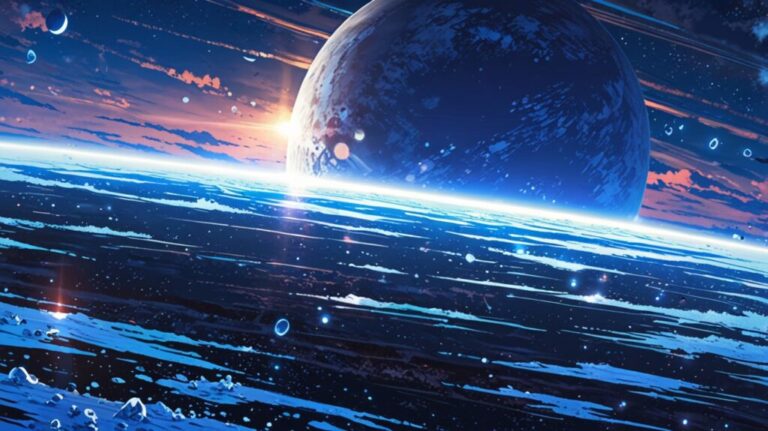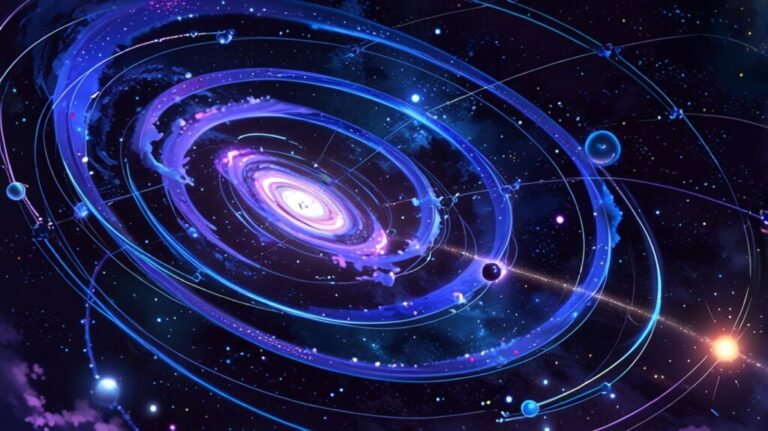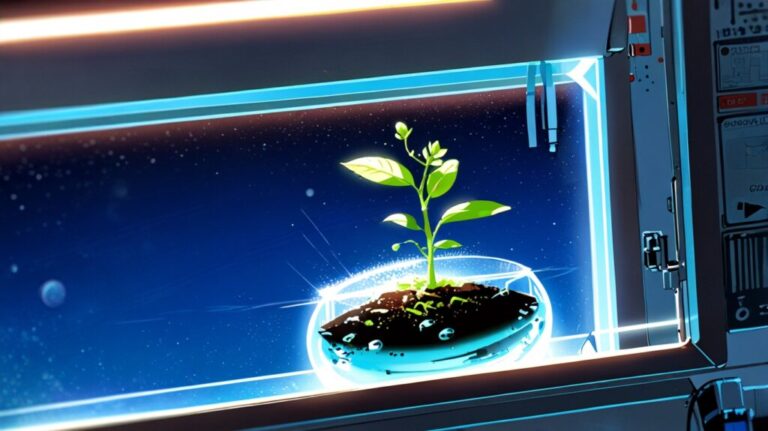Can Mushrooms Grow in Space Environments?
Can Mushrooms Grow in Space Environments?
Okay, I know it sounds like the kind of question you’d joke about during a late-night conversation when everyone’s way too tired — “Bro… what if we grew mushrooms in space?” But hold on. Because as silly as it sounds at first, this is actually a real thing. Like, people with PhDs and lab coats are seriously working on it.
And honestly? The more I read about it, the more I was like, yeah, this actually makes total sense.
So let’s break it down, in simple words — like I’m explaining it to a younger sibling or a curious friend who just asked “Wait, what?” for the fifth time. This won’t be technical. No jargon. Just vibes and mushrooms.
So… Can Mushrooms Really Grow in Space?
Short answer: yeah, they can.
But the longer answer is way more fun.
Mushrooms are a weird kind of awesome. They don’t care about sunlight, they grow in dark, damp places, and they’ll happily live off stuff that would make most plants gag — like coffee grounds or sawdust. Basically, they’re the introverts of the plant-ish world (I know they’re technically fungi, not plants, don’t come for me), and they’re super low-maintenance.
So when scientists started thinking, “How do we grow food in space where there’s no sunlight, limited space, and weird gravity?”, mushrooms raised their hand like, “Hi, it’s me. I’m perfect for this.”
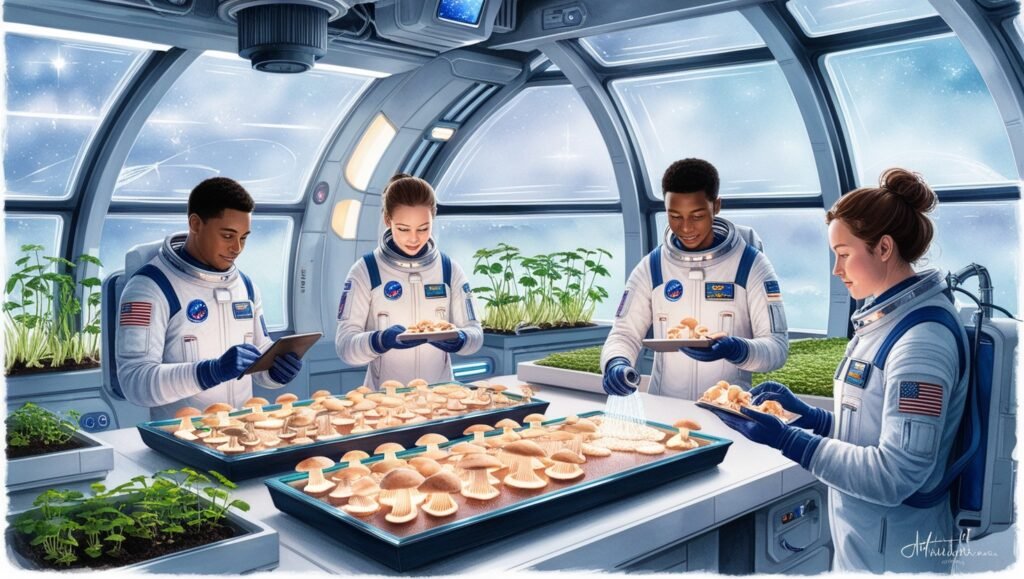
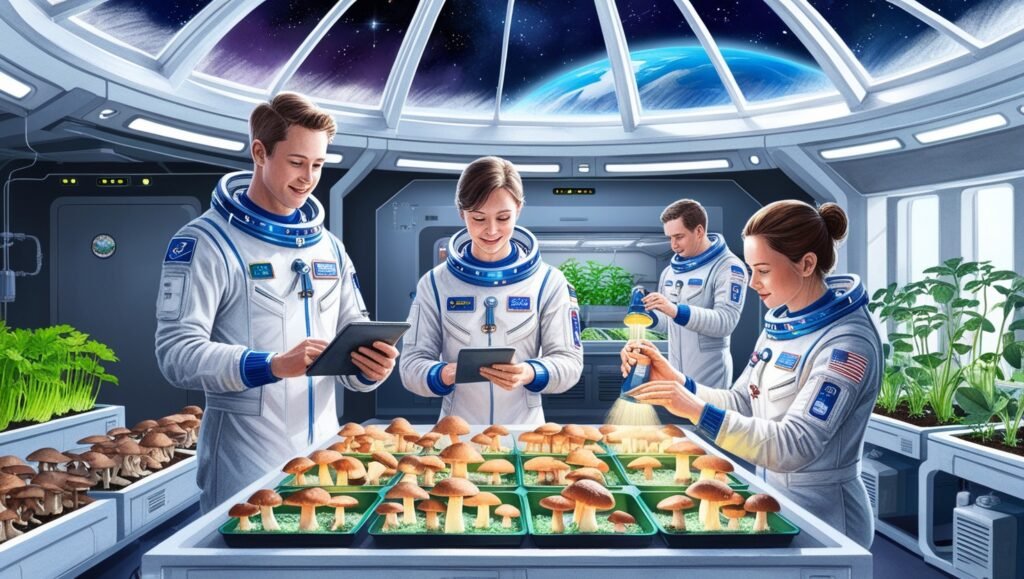
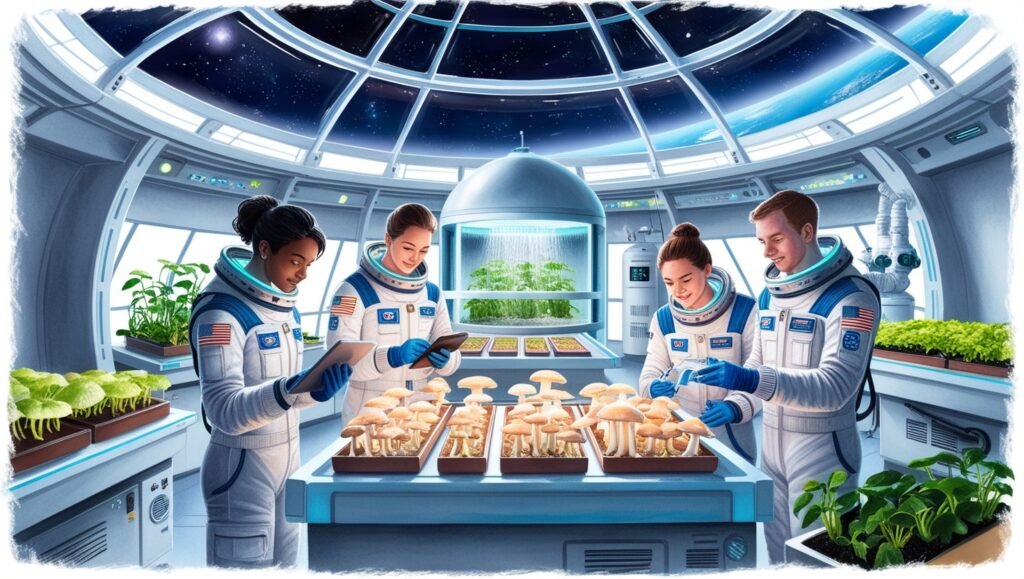
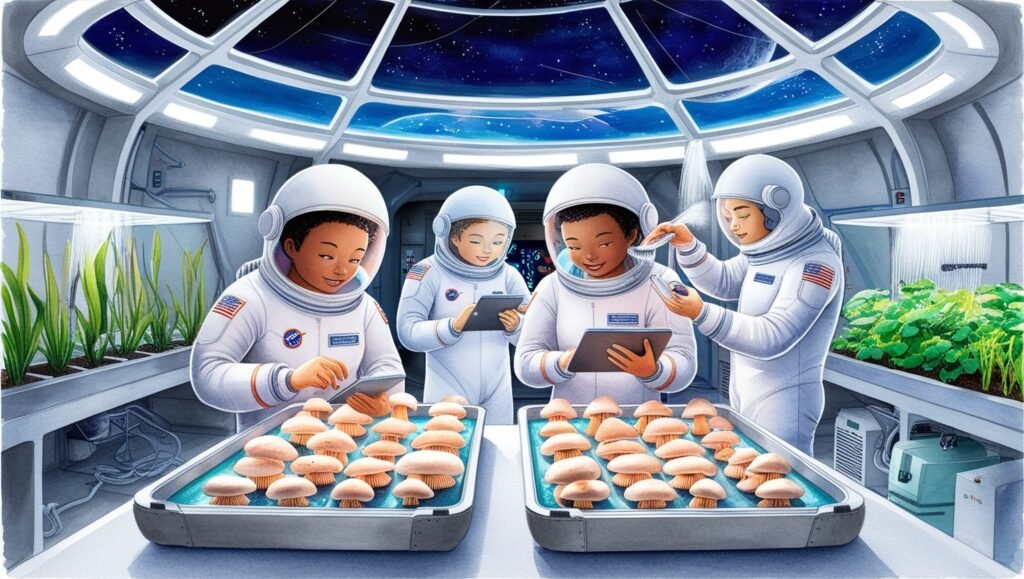
Wait, Who’s Actually Doing This?
Okay, so there’s this project called Mission MushVroom (I know, the name is kinda ridiculous in the best way possible), and it’s all about testing if mushrooms can grow in microgravity — basically, zero gravity conditions like in space.
They’re starting with oyster mushrooms, which are those white, fan-shaped ones that taste amazing in stir fry. The idea is to see if they can still grow their little mushroom caps and behave normally when there’s no gravity pulling them down.
If this works, it could change the game. Astronauts could grow fresh food on long missions instead of eating freeze-dried meals forever. And fresh mushrooms? In space? That’s some next-level comfort food right there.
Mushrooms: The Multi-Taskers of Space
But here’s the wildest part — mushrooms aren’t just good for eating. The real MVP is something called mycelium.
Imagine mycelium as the underground (or under-everything) network of stringy threads that mushrooms grow from. Kind of like the roots, but cooler. Mycelium can grow into shapes, fill molds, and even form solid structures. It’s basically nature’s version of 3D printing.
And NASA is actually looking at using mycelium to build space habitats. Like, actual houses. From mushrooms.
Here’s how it would work: you send dried spores to Mars, add water and nutrients when you get there, and the mycelium starts growing into the walls of your space home. It’s strong, light, and — here’s the crazy part — it can even help block radiation.
So… mushrooms could literally feed you and protect you from space danger. That’s a solid résumé.
These Mushrooms Don’t Just Survive — They Thrive
You think that’s wild? Some mushrooms actually love radiation.
Yeah. There’s this type called Cladosporium sphaerospermum (try saying that five times fast), and it was found in places like Chernobyl. You know, the place where humans literally can’t live because of the radiation?
This fungus not only survives there — it grows faster. It might actually be using radiation the way plants use sunlight. Like some kind of weird superpower.
So scientists are like, “Huh. What if we grew that in space and used it as a shield against radiation?” Because once you leave Earth’s protective bubble, space is full of radiation just flying around like it owns the place.
Mushrooms Have Already Been to Space (No Joke)
Here’s another fun fact: a fungus called Cryomyces minteri was literally launched into space and stuck outside the International Space Station — like, strapped to the outside, fully exposed to the vacuum and all the intense cosmic radiation.
It just… didn’t die. It came back, dusted itself off (probably), and said “That was cute.”
If a mushroom can survive that, it can probably survive a space greenhouse, right?
But It’s Not All Magic and Mushroom Dust
Let’s not get carried away though — growing mushrooms in space isn’t as easy as tossing some spores into a box and waiting.
- Gravity is weird up there. Water doesn’t behave the same way, which affects how mushrooms absorb moisture.
- Air circulation is important, and in a sealed-off spaceship, managing CO₂ and oxygen levels gets tricky.
- Contamination is a big risk. You don’t want mold growing in the wrong place, or bacteria messing up your mushroom crop.
But honestly? None of these problems are unsolvable. It’s just a matter of testing, tweaking, and figuring out the best systems.
So… What’s the Big Picture?
Mushrooms are doing the quiet heavy lifting. While flashy technologies like space rockets and rovers get all the attention, humble little fungi might end up being the real MVPs of space life.
They’re food.
They’re shelter.
They’re radiation armor.
They’re like that one friend who seems super chill and low-key, but when stuff goes wrong, they just quietly fix everything and make you soup. That’s mushrooms in space.
Related Articles from EdgyThoughts.com:
Why Emotional Intelligence Is Finally Being Taught in Schools
https://edgythoughts.com/are-schools-teaching-emotional-intelligence-now
Is VR the Future of Classroom Learning?
https://edgythoughts.com/is-vr-the-future-of-classroom-learning
External Resource:
Explore more on how fungi survive in extreme environments:
Cryomyces minteri
https://en.wikipedia.org/wiki/Cryomyces_minteri


